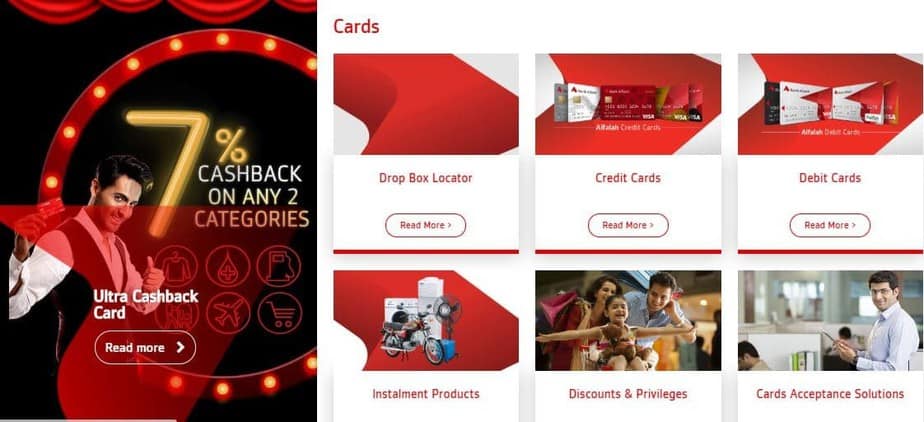Marketing Strategies For Small Business

Whether you’re starting a new business or already have a robust online presence for your brand is critical. Consumers learn about local companies the most online. When choosing which brand or retailer to buy from in 2022, 70% of customers consider the ability to do so in person or in a store. This article is about Marketing Strategies for small businesses. Small business marketing strategies have been essential when trying to start a company from the ground up, especially when competing with companies with bigger budgets.
Digital marketing is essential for small company owners looking to track ROI and brand awareness. Digital marketing is optional for selling your products or services. Still, it’s also critical to your company’s long-term success. For potential clients, having easy access to thorough and up-to-date information is just as important as ever. Online marketing strategies for small businesses can allow you to reach customers who are unreachable with marketing tactics for big companies.
If you’re a small business owner with little expertise in internet marketing, this sounds like Greek to you. Don’t be concerned; we’ll explain what these words mean and why you should care about them! In this post, we’ll show you how to develop and optimize your marketing plan using inbound guerilla marketing so that you can attract new consumers and expand your company.
The best Marketing Strategies for small businesses vary significantly depending on what market segment it is targeting and what size it is compared to its competition.
Marketing Strategies for small businesses vary from those for big companies because small businesses have a very different approach to advertising their product or services.

Small Business Marketing Strategies
Brand awareness and a pipeline of qualified leads that convert to sales are marketing goals & marketers’ tasks. Getting the word out may be challenging for a small business since there is less exposure and fewer resources (like money or time). There are, however, specific strategies that can help you scale up your small business marketing channels.
Whether you’re dealing with a tight budget, the limitations of having a minor team, or even a lack of direction, an appropriate content marketing strategy can assist you as you expand.
As you develop awareness and revenue for your company, these tactics are critical:
1. Know your audience
It’s a common misconception that “anyone” is your buyer. Larger enterprises may be able to appeal to a vast clientele, but for a reason, they claim, “the riches are in the niches.” As a small company, you’ll have the most power in a niche. To create a niche and attract clients, you must first understand their issues, difficulties, triggering events, and priorities.
2. Make sure your value proposition stands out
Whether or not you’ve achieved the desired results, if there’s no difference between you and your competitors, a buyer will have no choice but to work with you. Your value proposition distinguishes you from the competition and makes your prospects choose you over others. What do you offer that no one else in the market does? Making this point effectively demonstrates how superior you are.
3. Keep your eye on a single, specific aim or goal
You may have noticed that there are a lot of different methods to take while exploring the marketing field. It’s alluring to build a complicated mechanism in the hopes that you covered every base, and it’s easy to accept too much.
Instead, figure out where your business will be making the most difference. What is the most prominent blind spot in your marketing holding you back? Set a goal for that one crucial area and focus your time and resources on activities and tactics that will help you achieve it. When you’ve made more significant progress toward that main aim, you may either expand your efforts or pivot to different initiatives.
4. Make the most of short-term opportunities
Remember, every successful business was once a scrappy one. As you expand, it’s essential to see results more quickly. This will give you the momentum and cash flow needed to invest in larger projects, long-term gambles, and more permanent growth models.
Poor fits for your primary initiatives are tactics that require time to develop (such as SEO). Because you won’t see a return quickly enough for your liking, these tactics aren’t suitable for your primary efforts. If you have the money to start, there is no problem, but only put some of your eggs in one basket.
Suppose you have proof that consumers are searching for your product on Google with purchasing intent. In that case, paid advertising may provide a quick return on investment.
5. Use free promotional tools
Regarding free promotional tools, keep in mind that there’s no need to overspend on overhead since you’ve set a tight deadline and scope. Use free promotional goodies where feasible and only invest in paid equipment if you’re confident they’ll make a significant difference.
6. Create your website to take control of your online presence
A professional-looking website is one of the most important assets you will develop for your small business. This is where you’ll reveal who you are, what you provide, where you’re located, and how a potential customer may connect with you. Customer service is important in that case.
It’s an asset that will always be yours (unlike other platforms that might change policies or go in and out of style). It can also generate organic traffic via advertising and other marketing efforts.
You may also convert visitors to leads by using your website as a salesperson. You can use your website as a 24-hour salesperson by learning how to convert traffic into leads.
7. Make use of social media to promote yourself
Social media may appear to be a simple way for individuals to interact and connect. Still, it is, in fact, a powerful business tool. Social media can aid you in increasing your domain authority, improving your search engine rankings, and engaging with potential consumers. Why wouldn’t you want to be seen where your potential customers are likely to be?

8. Invest in advertising
Organic traffic takes time to develop, and you should prioritize short-term initiatives as a small business. Pay-to-play strategies that target consumers with high intent are effective for jump-starting other goals in the near term. If your target audience isn’t searching the web for your product or service, Google Ads, and Facebook ads are ideal. Individuals on social media have less buying intent than those who use search engines like Google or Bing; however, highly targeted advertisements and enough impressions can win your audience’s attention.
Marketing Tips for Small Businesses
Every small business wants to attract customers and get the right kind of attention. But small businesses often feel overwhelmed with marketing methods today, from TV to YouTube, from social media to networking events. Here are some marketing tips for small-business owners:
Determine your brand’s identity
A consistent brand identity will make you appear more professional and help you attract new consumers. According to a 2020 survey, approximately nine out of 10 individuals are brand loyal, with around 25% intending to be more brand loyal in 2020 than in 2019.
When you’re not in the room, other people’s opinions of your business circulate. Mr. Bezos calls a firm’s branding “what others say about you when you’re not there.” In other words, your brand is what people feel and experience when hearing your company name. It’s made up of all of these things: your company name.
2. Identify your buyer persona.
What are your customers like when you imagine them looking for your product or service? Secondly, What is their problems? What is their employment situation? You may develop a buyer persona to create a website tailored to your target customer.
3. Design a logo and other assets.
Consider your color scheme and peruse palettes with Adobe Color or Coolors to get started. You may design your logo or check out pre-made or customized color palettes. Online, you can create your logo for free or at a lower cost than employing a freelancer or agency.
4. Use a CMS template to create your website
Most small businesses will want to create their website. The process is more accessible with a CMS (content management system). There are templates for various skill levels, ranging from beginner to expert. After you’ve built your website using a CMS, most platforms provide plugins that can help you build high-quality material for search (look for SEO plugins). This will assist you in ranking higher on Google.
5. Analytical tools can help you track your website
Many free tools and services are available to assist you in getting up and running if you’ve never created a website before and aren’t entirely confident with the technical elements. Make sure you use Google Analytics to build your website to follow who’s been looking at it.
6. Use SEO to enhance your Google ranking
Have you ever Googled yourself or your product/service online if you already have a business? Have you ever wondered why your website isn’t displaying when searching for it on Google? “How can I get a higher Google ranking?” you inquire. Or “How can I improve my Google ranking?”
There are various reasons why a particular site or page appears in the top positions on Google’s (or another search engine)’s SERP). Backlinko has identified some of Google’s most important variables, including having relevant keywords (and their placement on your site), the length of your content, high-quality material, how quickly your page loads, and how often you publish.
A thorough SEO approach usually includes several activities. These include buyer persona study, keyword research, and on-page SEO study. These three categories help you understand how your target market searches online and position your business to be found by the appropriate people.
7. Make sure your website is mobile-friendly
Because most Google searches are made using a mobile device, it’s critical to have a site that appears clean and straightforward when someone types it into their smartphone. A mobile website can also be helpful for SEO.
8. Experiment with different types of photo and video material
According to a report, more than half of customers want to watch brand videos. Most social media platforms, such as Facebook and Instagram, use visual designs increasingly. To keep up with these changes, it’s a good idea to create some marketing videos for your product or company.
9. Create Facebook and Yelp profiles for your business
The most crucial accounts for you are Facebook, Yelp, and Google’s business feature if your company is focused on a specific region. Having high Yelp ratings increases your online credibility and helps your search ranking. You may get started with free registration on Yelp, customize your profile, add photos, and request evaluations immediately.
The process of setting up a Google business page is identical. You may register your firm with Google (for free) and add pictures to your profile. Because you haven’t claimed it yet, you could not locate it in Google Maps.)
You may establish a Facebook business page to advertise your location and hours on Facebook. For any company, having up-to-date social media profiles is essential for being found and engaging with prospects. Create a Twitter account, a Facebook group, an understanding of how to use Instagram (if applicable), and a Pinterest group (if relevant) to discover new consumers.
10. Develop a social media strategy
Social media platforms like Facebook, Yelp, and Google+ will be valuable tools for local searches and reviews. In addition to these sites, Instagram, Pinterest, and Twitter will give you more chances to get your content out there. If your customer base has the access to internet shopping, they’ll have another method to locate you on these sites.
11. Make a plan for email marketing
After you’ve started producing standard material and developing landing pages, you’ll want to share them with the prospects that appear most interested in learning more about your service. As a result, establishing an email marketing strategy is a good idea.
It would help if you struck a balance between not inundating people who join your email list with too many emails while keeping them informed and interested. Most email solutions also provide simple analytics, which allows you to monitor open and click rates.
12. In emails or on landing pages, provide discounts
A coupon in your marketing emails may entice and delight your audience. They could be more willing to pay for it at a total price if they acquired a product or service at a reduced rate. If you have a subscription business, offering consumers a code for a free trial so that they can try it out can be very useful.
13. On your website, list the distribution channels
Use a simple but effective message to encourage your followers and potential customers to follow you on social media. Highlight it on your website so that people may subscribe to your newsletter. According to one approach, a company’s linked social icons and a request for them to sign up for your newsletter should be displayed on all web pages. The top right corner or at the footer of each page is an excellent location to include these. They are visible without detracting from any content this way.
14. Offer a free webinar
A webinar is a series of online lessons hosted by you that potential consumers may attend. These courses are generally between 30 minutes and an hour long, allowing you to offer guidance and answer questions about a topic your company is knowledgeable about. While this approach may help you increase your reputation in your field, it can also provide possible leads and sales possibilities.
15. Do some co-marketing
Is there a local firm that isn’t technically your rival but serves a similar target audience and sells products or services? Consider collaborating on a co-branded campaign where you may promote each other on social media, email, or blog. While you’ll get additional promotions for doing so, it will also allow their fans to learn more about you.
One-Page Marketing Plan

A one-page marketing strategy is a concise, targeted document describing an organization’s primary steps to reach its marketing and sales objectives. In most cases, it will comprise a brief overview of the intended clientele, a description of the goods or services offered, and a rundown of the promotional and sales initiatives undertaken.
If you’re a small company looking to convey your marketing approach to investors rapidly, workers, or partners, consider creating a one-page marketing plan. Additionally, it helps in monitoring development and making necessary marketing strategy changes in the best way.
An example of a one-page marketing strategy may look like the one below:
- In a nutshell: A quick summary of the company, its offerings, and its intended clientele.
- Products/services: Specify what you’re selling by breaking it into parts and outlining its features and advantages.
- Sales and marketing strategy: a detailed account of how you intend to reach your demographic and make money. Strategy for putting the social media marketing and sales plan into action, including a breakdown of who is accountable for what and by when.
- Budget and resources: A detailed accounting of the money and people power needed to carry out the marketing strategy.
- Metrics and Key Performance Indicators: A set of metrics and key performance indicators (KPIs) will be used to evaluate the marketing strategy’s efficacy, such as website visits, new leads, and income gained.
- Concluding Remarks and Future Actions: Key learnings from the marketing plan and recommendations for moving forward for the company.
Conclusion:
You’ve got a long way to go until your internet presence is where it should be. Still, any progress you can make will significantly impact your business. Some things, such as blogging, take months to begin producing traffic and having an effect. Still, pay-per-click sponsored social media posts have immediate results. Small business marketing strategies can mean so many different things and have a variety of goals that they are trying to meet. Still, they all have one thing in common: they want to sell their product or service to potential new customers to make a profit. If you still need to decide which direction is best for your company, using this marketing plan template might be a great way for you.




